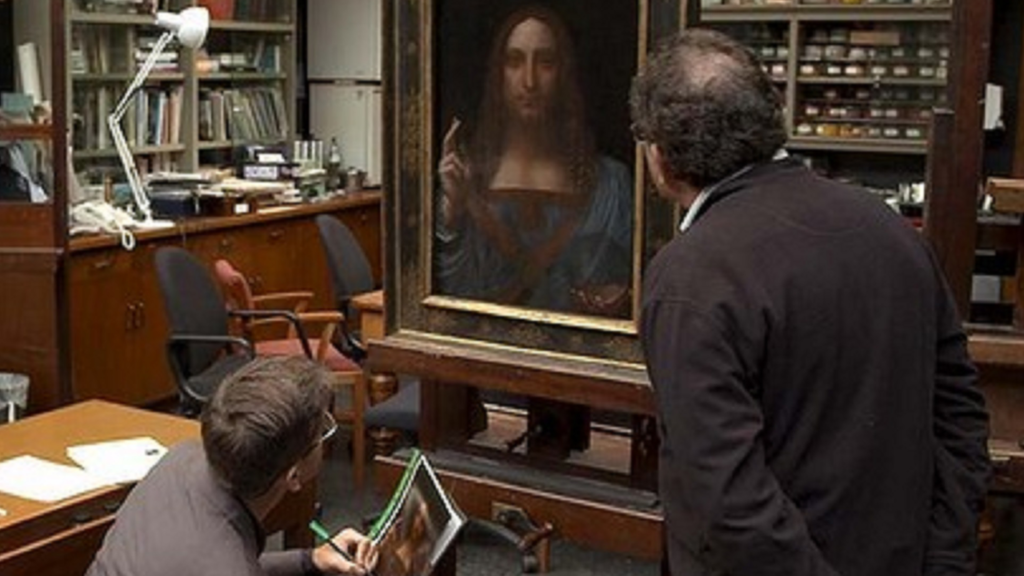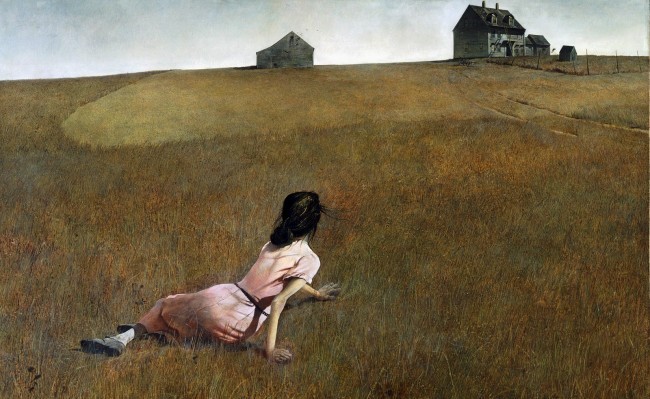
The insightful and thought-provoking documentary The Lost Leonardo starts out as a mystery. We learn that there are “sleeper hunters” in the art world, who seek unrecognized or mislabeled art and buy them on speculation. Our two sleeper hunters buy a beat up, old painting for $1100 to find out if is a long lost original Leonardo da Vinci painting, “the male Mona Lisa”. So, the initial question is, is this a real Leonardo painting, of which only 15 are known to exist?
Around 1500, Leonardo painted a Jesus portrait titled Salvator Mundi (The Savior of the World), of which many copies were made by others. The speculators send their painting to the world’s top restorer of Renaissance masterpieces to query whether this could be the original. Then they approach the National Gallery of Art, which has the painting scrutinized by three leading world experts in Leonardo’s work.
The initial findings are promising. The transition between the lip and the upper lip resembles only one other painting – the Mona Lisa. Removal of patchwork paint reveals that Jesus’ thumb has been repositioned, which was a common practice by Renaissance masters, but is never is seen in a copy.
But questions remain for some. Why would Leonardo, who was meticulous, choose a piece of wood with a knothole that would assuredly eventually cause a disfiguring crack? Worse, how could a 600-year-old Leonardo show up in New Orleans with no provenance?
Both the proponents of the painting’s authenticity and those who would discredit it agree that the restorer contributed up to 85% of the actual paint on the current painting. So, even if Leonardo painted it in 1500, is it now just a masterpiece by the restorer?
The story diverts to an amazing con job that is unrelated to the painting’s authenticity. A shrewd and audacious French businessman bilks a Russian billionaire out of $45 million by pretending to be negotiating the purchase of a painting that that he has already bought. And, as the Frenchman later notes ruefully, you don’t want to piss off a Russian oligarch.
At this point, The Lost Leonardo takes us into a record-breaking $450 MILLION art sale (in which the purchaser is revealed by the CIA – yes, the CIA) with implications for global politics. Implicitly, The Lost Leonardo poses a second question – does it matter whether the Salvator Mundi is real or not? It certainly doesn’t need to be proven to those who would benefit from it being a real Leonardo – the sellers, the National Gallery of Art, Christie’s auction house – or to those who are emotionally moved by it as a piece of art.
The Lost Leonardo peels back the onion on an ever surprising tale of discovery, scholarship, fraud, commerce and politics in the refined and pretentious art world. It’s a good watch.

